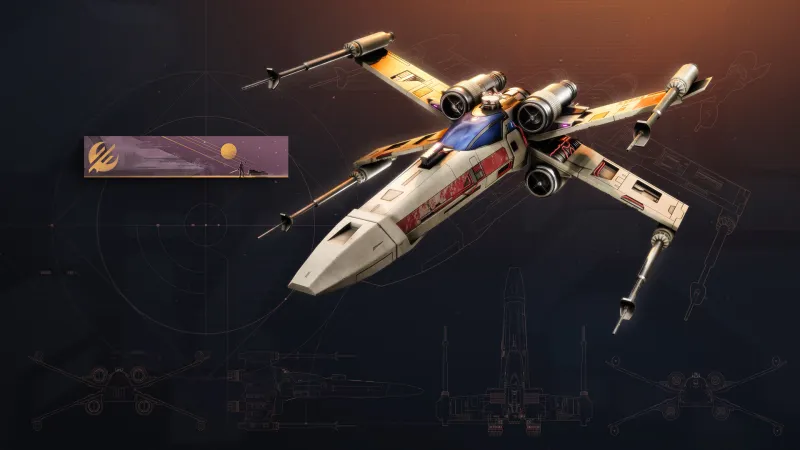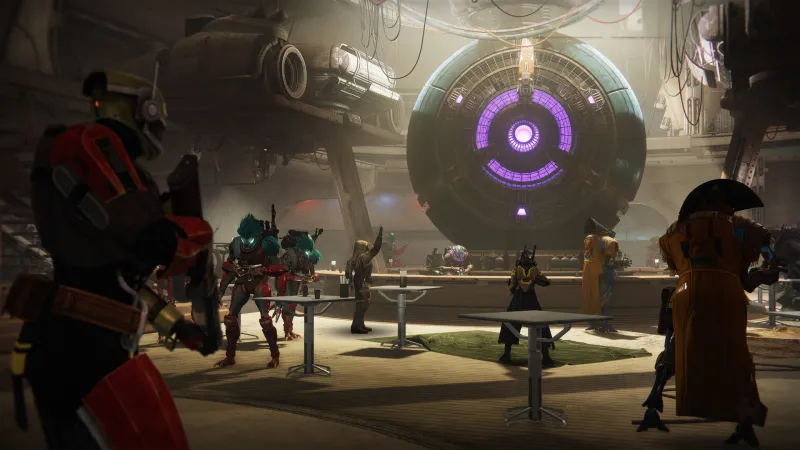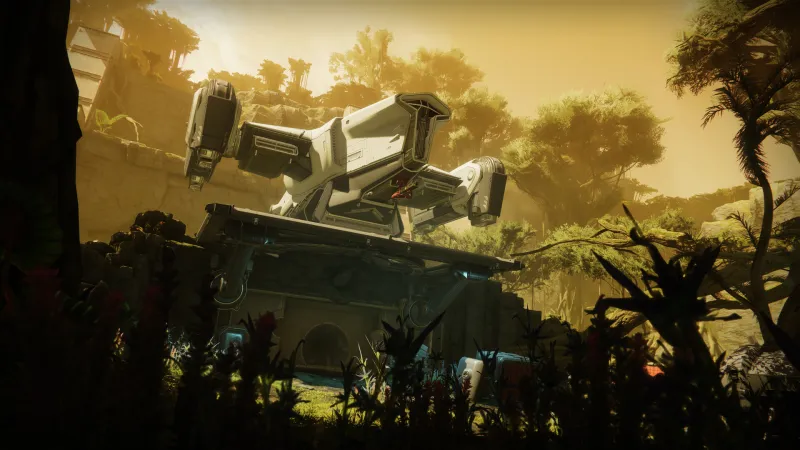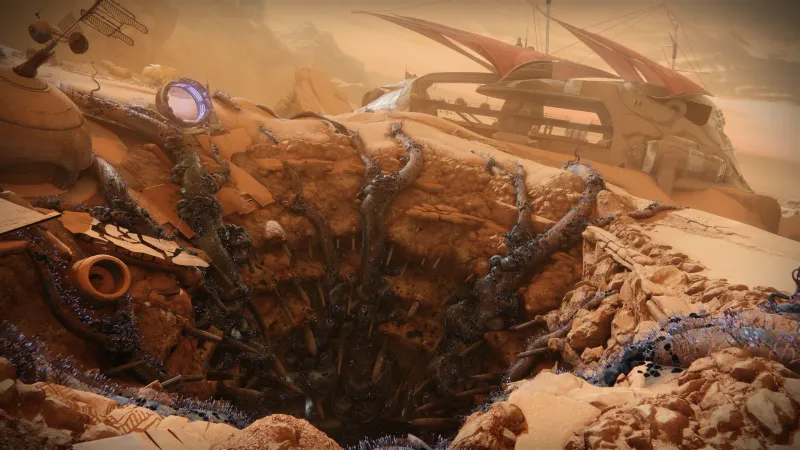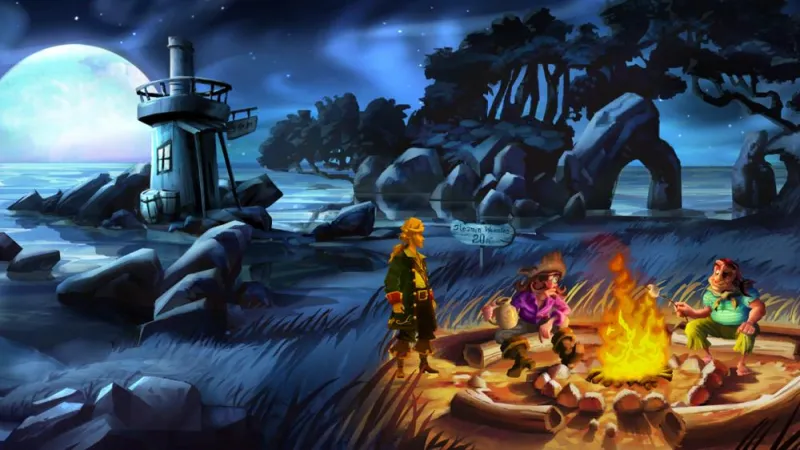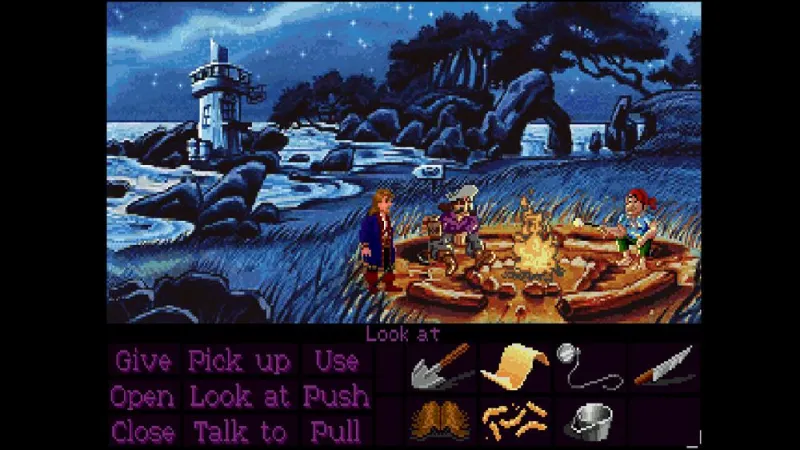Reading List
The most recent articles from a list of feeds I subscribe to.
Destiny 2: Renegades Review - More Than An Inspiration
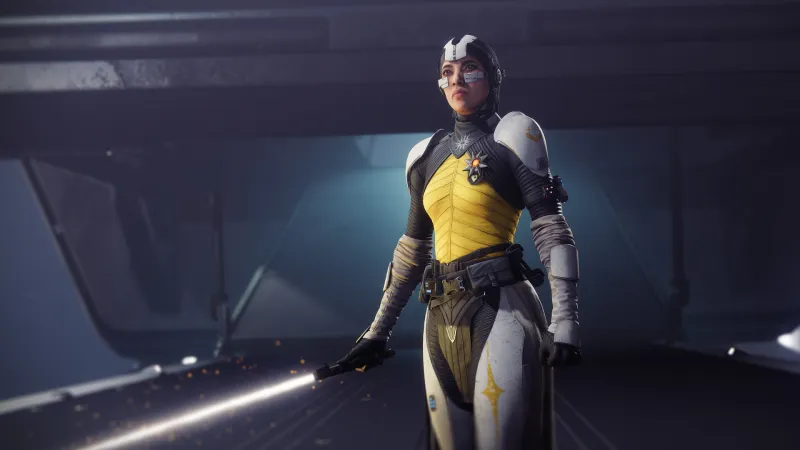
Reviewed on:
PlayStation 5
Platform:
PlayStation 5, Xbox Series X/S, PC
Publisher:
Bungie
Developer:
Bungie
Release:
Rating:
Teen
Destiny’s earliest incarnation drew heavily on the science/fantasy roots established by Star Wars, nodding in various ways over the years to that mainstay of genre fiction. As an expansion, Renegades makes those inspirations far more explicit, borrowing directly from that galaxy far, far away to bring in the likes of lightsabers, Jedi, blasters, specific storytelling beats, and familiar costumes – albeit with distinct naming conventions. The suffusion of familiar Star Wars elements is sometimes odd and forced, and at times, it loses touch with some of the things that have always helped Destiny stand apart.
Nonetheless, the fun of some of those transplanted elements (especially lightsabers) is hard to deny. Moreover, on a more moment-to-moment level, Renegades represents a strong loop of storytelling, game modes, and upgrades that is a notable step up from Edge of Fate earlier this year. In total, it’s a strong batch of content that’s well worth exploring, especially if you’ve been away from the game for a time.
In the wake of the revelations in Edge of Fate, the Guardian is now contending with the godlike power of the Nine as they contrive to shape fate as they see fit. In particular, one of the Nine has exerted control over a Kylo Ren-esque individual who takes issue with the Vanguard and is preparing a doomsday weapon that will devastate the Guardians. As Wilhelm screams sound, trash compactors squeeze, and red energy blades clash against green, the narrative that ensues is fun but almost forcibly familiar, demanding you acknowledge each moment as a nod to Star Wars canon.
What saves it is the pace and action that drive everything forward. Your guardian is now a truly epic one-person army in their own right, and Renegades stacks up dozens of enemies in each battle to mow down. Bosses are potent and enjoyable; traversal puzzles are exciting, especially the lengthy temple visit to get your glowing blade; numerous seasonal and expansion rewards provide a steady stream of gradual, compelling upgrades.
The ample new social space is built around a lawless Cantina, and I enjoy the loop of different competing factions you bounce between from their home base around the bar. Venturing out into distinct play spaces on Venus, Mars, and Europa, the bounty hunting, smuggling, and other jobs you undertake feature varied and challenging objectives, especially as one climbs to higher difficulties. These jobs borrow concepts from the likes of Helldivers or extraction shooters like Arc Raiders, but the core action and shooting is unmistakably Destiny.
Of all the Star Wars inspirations, the unqualified success in the mix is the introduction of the Praxic Blade, a lightsaber analogue that dramatically changes up playstyles for everyone, and features a variety of sought-after customization options. There’s an undeniable power fantasy to being a mythic warrior with a glowing blade in hand, and Bungie has really nailed what’s fun about slicing into enemies, throwing the weapon in wide boomerang-like arcs, and deflecting blasts onto foes.
While content organization has seen significant reworking in the last year, I quite enjoy the customizability available to tweak the many activities on offer. Bungie seems conscious that many players may have lapsed and might only now be returning, and much of the current game aims to resurface some great dungeons, raids, exotic missions, and other high-end content that a player may have missed, but with great flexibility in how challenging (and rewarding) that content will be. Alongside new fun chases, like the engaging new 3-person Equilibrium dungeon, there’s a lot to do, and a lot of it is immersive and thoughtfully crafted.
I’m not totally sold on the melding of universes that Renegades aims for, but I think the expansion as a whole offers many hours of satisfying exploration, build-crafting, and new rewards to discover. This isn’t the fundamental reinvention of Destiny that many fans seem eager for, but as a creative twist on expectation, it offers plenty of good times.
Score: 8
Sucker Punch Productions Co-Founder Brian Fleming Is Departing From The Studio

Sucker Punch Productions, which released Ghost of Yōtei back in October, has announced that one of its co-founders and studio head, Brian Fleming, is departing from the company. Starting January 1, creative and technical directors Jason Connell and Adrian Bentley will step into new roles as studio heads, continuing Fleming's mission at the PlayStation first-party studio.
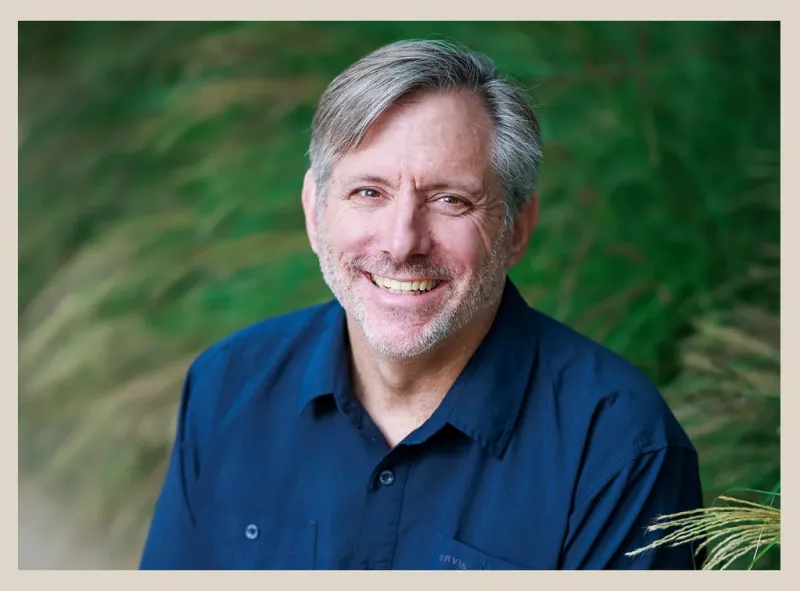 Brian Fleming
Brian Fleming
Sucker Punch was founded 28 years ago, in 1997, by Fleming and five others. Fleming has been with the studio all this time, helping bring to life PlayStation franchises like Sly Cooper, InFamous, Ghost of Tsushima, and recently, Ghost of Yōtei. A press release about the news says Fleming has been working closely with PlayStation Studios to "ensure that Sucker Punch was in the best hands moving forward with a strong foundation for the studio's continued success."
It seems that led Fleming and PlayStation to hand over the reins of Sucker Punch to Connell and Bentley, who will continue "to guide the team's focus on ambitious, character-driven experiences that define PlayStation Studios."
Connell previously worked as the co-creative director on the studio's Ghost franchise, defining "the studio's visual identity and storytelling style, bringing cinematic depth and emotional resonance" to players, the blog post reads. Bentley, as technical director, led the studio's engineering and production efforts, "driving innovation across development tools and game systems that make Sucker Punch's worlds so immersive."
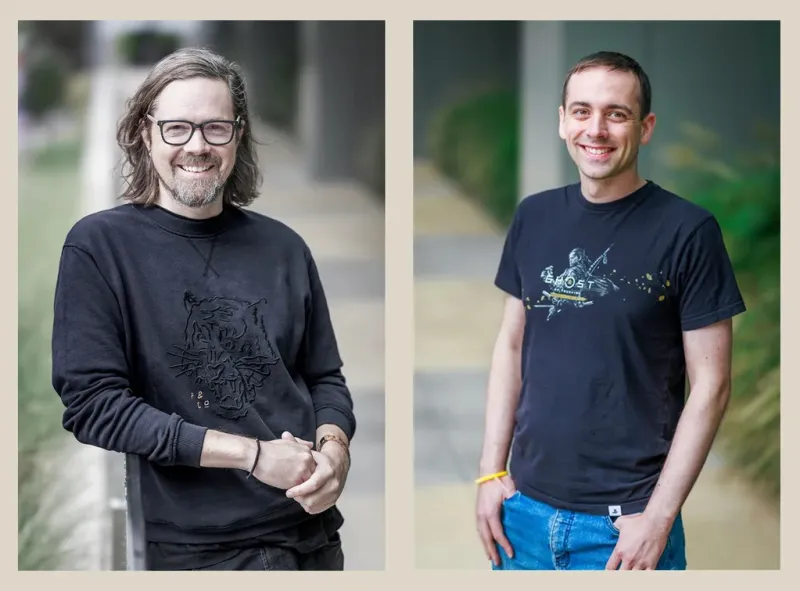 Jason Connell (left), Adrian Bentley (right) – Sucker Punch Productions Studio Heads
Jason Connell (left), Adrian Bentley (right) – Sucker Punch Productions Studio Heads
"Together, they represent the perfect blend of creative vision and technical excellence that has always set the studio apart," the post continues.
Elsewhere in the studio, Nate Fox will continue as the co-creative director at Sucker Punch.
Following the release of Ghost of Yōtei back in October, Sucker Punch has been preparing its free multiplayer Legends expansion for the game, which is set to launch sometime next year.
While waiting for that, read Game Informer's Ghost of Yōtei review, and then read Game Informer's Ghost of Tsushima review.
Bruce Straley On Coven Of The Chicken Foot: 'It's Actually An Idea From Way Back When We Started Jak And Daxter'
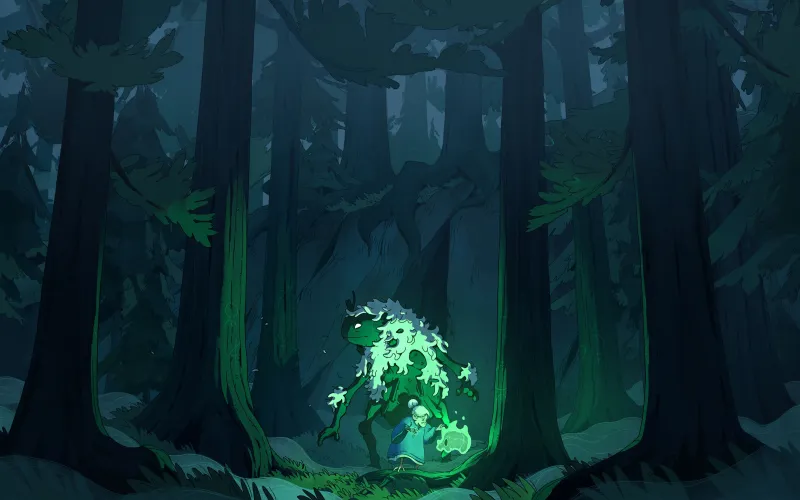
The Last of Us co-creator Bruce Straley revealed his next game, Coven of the Chicken Foot, during The Game Awards 2025 earlier this month. Developed at Wildflower Interactive, a new studio Straley founded in 2022, Coven of the Chicken Foot promises a witchy post-apocalyptic adventure about an old woman exploring a fantasy world after its dungeons have been plundered, its caves explored, and its enemies defeated.
Along the way, this witch will encounter an oddball companion that will autonomously work with you to complete puzzles, platform through levels, and more. During today's episode of Kinda Funny Games Daily, Straley appeared alongside host Greg Miller to briefly discuss Coven of the Chicken Foot before diving into the video game news of the day, which is what the show is about. During this chat, which happened at the top of the show, Straley explained that the idea behind Coven of the Chicken Foot had been lingering in his mind for years.
While speaking to an old Naughty Dog colleague about game development, Straley recalls telling that colleague, "[I] have an idea that's been lingering for many years. It's actually an idea from way back when we started Jak and Daxter. It's just kind of been lingering; it's even in the Naughty Dog art book, like I drew some pictures and stuff." Presumably, Straley is referring to the 2014 Dark Horse Comics-published book, "The Art of Naughty Dog."
"The idea was there, and it was like, 'Okay, there are some things I still want to prove out.' Like, is there a way to tell stories that are more interactive with characters, in a world, rather than a story being told to me that's more about cutscenes and exposition?" Straley told Miller when asked about his journey back into game development after a sabbatical that became a moment to depart from Naughty Dog back in 2017. "Nothing wrong with that – I did a lot of that. For me, I wanted to go like, 'Okay, it's like a spiritual successor of Ellie.' Everything we learned about Ellie and making this character feel dynamic and responsive in combat wasn't the same Ellie that – when she got pouty or excited, those were scripted moments, and I wanted to know if I could create those kinds of moments dynamically, like in-game, letting the player drive the story and the relationship with the character and I was like, 'Okay, what if?'"
Straley explained that after a year of prototyping, Wildflower Interactive had three or four people on board and then created demos and pitched the game.
"The game said to me, 'I want to get made. This is a game I would play. It's a game that I'm proud to make,'" he concludes.
Elsewhere in the show, Straley listed "Circe" by Madeline Miller and "The Buried Giant" by Kazuo Ishiguro as two significant sources of inspiration for Coven of the Chicken Foot.
There's no release date for Coven of the Chicken Foot yet, but it is currently in development at Wildflower Interactive for PC.
Are you excited to play Coven of the Chicken Foot? Let us know in the comments below!
Larian Studios Confirms That, Unsurprisingly, Divinity Will Be A Turn-Based RPG
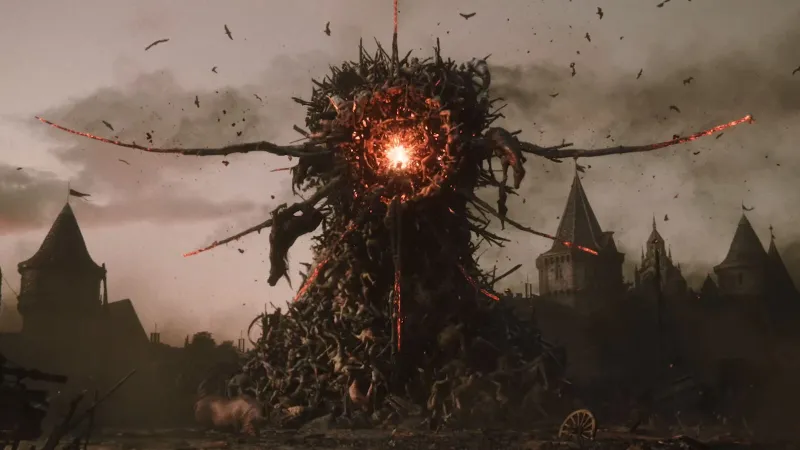
Baldur's Gate 3 developer Larian Studios revealed Divinity, a new game in its long-running Divinity series that includes 2017's Divinity: Original Sin II, during The Game Awards 2025 earlier this month. Though we all assumed it, Larian has since confirmed that Divinity will be a turn-based RPG in a new interview with Bloomberg.
Speaking to Bloomberg, Larian founder, CEO, and creative director Swen Vincke called the game a "turn-based RPG," quelling any fears the studio would be experimenting outside of its bread and butter. That said, Vincke also teased the game's massive scale.
"This is going to be us unleashed, I think," Vincke told Bloomberg. "It's a turn-based RPG featuring everything you've seen from us in the past, but it's brought to the next level." That lines up with what The Game Awards 2025 host Geoff Keighley said on stage following the game's reveal, where he called it Larian's biggest game ever.
Watch the Divinity cinematic reveal trailer below:
For the uninitiated, Divinity is an original series created by Larian that began with Divine Divinity in 2002 and continued with 2004's Beyond Divinity, 2009's Divinity II, 2014's Divinity: Original Sin, and 2017's Divinity: Original Sin 2, which launched yesterday on PlayStation 5, Xbox Series X/S, and Switch 2. That said, as you might know, despite success in its original Divinity series, it was 2023's Baldur's Gate 3 that propelled Larian to new (and successful) heights.
However, Baldur's Gate 3 wasn't an original IP – it's owned by Wizards of the Coast, the maker of Dungeons & Dragons and Magic: The Gathering. In 2024, Vincke revealed the studio is done with Baldur's Gate 3 to focus on something new (presumably Divinity), adding that Larian is not returning to the Baldur's Gate franchise for its next game.
There's no release date for Divinity in sight, but Vincke tells Bloomberg that Larian plans to do an early access release before its 1.0 launch.
While waiting to learn more, read Game Informer's Baldur's Gate 3 review, and then read Game Informer's Divinity: Original Sin 2 review.
[Source: Bloomberg]
Are you excited for Divinity, or would you have preferred Larian make another Baldur's Gate game? Let us know in the comments below!
Scott Pilgrim Creator Bryan Lee O'Malley's Three Favorite Games Of All Time
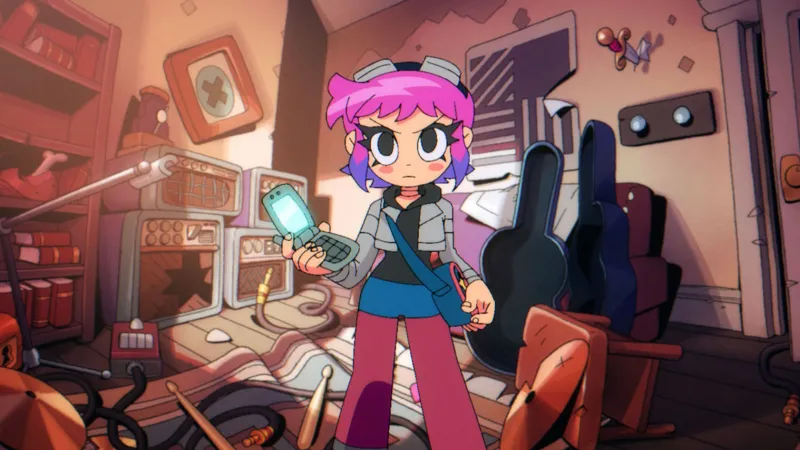
Bryan Lee O’Malley is the artist, writer, and creator of Scott Pilgrim. He published the six-part comic series between 2004 and 2010, worked closely with director Edgar Wright for the film and recent anime adaptation, and is now heavily involved in the new beat 'em up video game from Tribute Games, Scott Pilgrim EX.
Video games are crucial to the world of Scott Pilgrim and no matter what medium his universe exists in, that influence is impossible to miss. In tandem with a trip out to Montreal, Canada, to see, play, and write about Scott Pilgrim EX in an upcoming issue of Game Informer magazine, I also had the chance to speak with O’Malley on a video call about how much more involved he is in Scott Pilgrim EX than the 2010 game. We also talked about his favorite games of all time, his favorite games from this year, why he is dragging his feet on getting a PlayStation 5, and which game’s art style he described as toxic, making his eyeballs melt.
Game Informer: What part of Scott Pilgrim EX is important to you? What are the elements that you are personally focusing on?
 Bryan Lee O'Malley
Bryan Lee O'Malley
Bryan Lee O’Malley: All of them. All the parts? Yeah. It's hard to separate parts. We all just want it to be a good game. My official role is consultant, so anytime they show me anything, I'll give them my honest opinion and try to improve it as much as I can. I'm just dabbling in all of it. Mostly, obviously, I did most of the writing. Most of the text in the game had my hand on it in some way, and a lot of the character designs, but not all because there's so many. If you've seen the game, there are tons and tons of characters, enemies, NPCs, etc. I did what I could there. I did what was most needed there and let the artists do their own thing as much as they could.
This isn't the first game you've worked on. It's not even the first Scott Pilgrim game you've worked on. But are you becoming attracted to the ideas of game design? Are you getting into the weeds of the way this character moves and minutiae like that?
I love games, I've always loved games. When I was 14, I was making up my own games on binder paper, but at the same time, it's not my game. I am a consultant. It is Tribute’s game. So I step back, let them do their thing, and just help where it's needed. There are only a few times where I've been like, “Oh, we should tweak this gameplay thing or that whatever.” Because I don't want to be annoying or overstep or be controlling, because it takes them time to develop their ideas and to get things flowing.
The game in its current state, which you played yesterday, is pretty magical just in the way it feels and flows. And I could never have done even 1% of that.
 Scott Pilgrim vs. The World: The Game (2010)
Scott Pilgrim vs. The World: The Game (2010)
I talked a lot to Tribute co-founder Jonathan Lavigne about the influence of River City Random on EX. There are video game references all over Scott Pilgrim, but River City Ransom is one of the more prominent ones. I want to hear about your love for that game, in particular, and how it's a factor for Scott Pilgrim.
I think that game informs the structure or the feel of Scott Pilgrim EX. But it was a big influence on me. I played it when I was a kid. It came out when I was 10 or 11 years old. And I remember vaguely renting it with a friend and playing it all night, just having the best time. It’s like a totemic video game memory for me, especially co-op, and it's obviously not just that it's a game. It was a nice pivotal experience with a friend growing up, so they're tied together for me, like gaming and connecting with people.
And the format is still fun. I revisited River City Ransom on the Switch NES library. I played it for a couple of hours the other night. It's still so fun. It's so simple. And I was playing it just to be like, “Oh, is our game really that much like this? It’s not, but it feels the same. It has the feeling of it, which I love.
How did Scott Pilgrim EX come together? Was this something that you've wanted to do for a while, or did Tribute bring it to you?
It's both ways. Ever since they founded Tribute, we've talked back and forth over the years, saying, “Let's do something, let's do a Scott thing, let's do this or that.” Scott was complicated because of rights issues and stuff like that. That’s why the game was delisted for years – the old game.
But ultimately, it just happened that we did the anime and Universal was open to doing more projects. And at that time we were talking together, [Tribute co-founder] Jonathan [Lavigne] and the other guys and I, and it was just like, “Let's pitch something and see if they go for it.” And they did.
Basically, I rolled right out of working on the anime and into working on this game.
 Scott Pilgrim EX (2026)
Scott Pilgrim EX (2026)
And there was the Scott Pilgrim comic anniversary box set re-release recently. You're a busy man.
Well, I'm not as busy as I should be, really. As a cartoonist, I feel like I could be doing so much more. But yeah, it was like November, December of 2023, two years ago, we finished the show, we put the show out, promoted the show. I think in January 2024, I did all the art for that box set, which is a lot of art and I had to really cram it in there. And then we pretty much started working on the game right after that.
The recent anime, revisiting the comic for the box set – why the return to Scott Pilgrim now?
Basically, just someone asked. It's not like they rolled the truck of money up to my house. It's not super lucrative, to be honest. But it is really fun. Inviting new people into my playground a little bit has been really good for me personally. I feel like I've been able to reclaim Scott Pilgrim a little bit, where for a while in the late 2010s, it felt like an albatross, or it felt like it was a dead weight around me, and I didn't know what to do with it.
But people would always bring it up. Was it a sore spot? Or was it something that I cherished? And doing all these new projects really helped me rekindle that love.
You are making a new short Scott Pilgrim comic for the physical edition of the game, right? This is the first time you've drawn a Scott Pilgrim comic since the original release?
Yeah, I'm drawing it right now. It feels weird, yet very familiar. I'm intentionally doing it in a small size, so it would be less daunting because I was a little nervous to get into it. I literally opened up some of my old templates, and I'm using the same font size and stuff so it just feels very familiar at the same time.
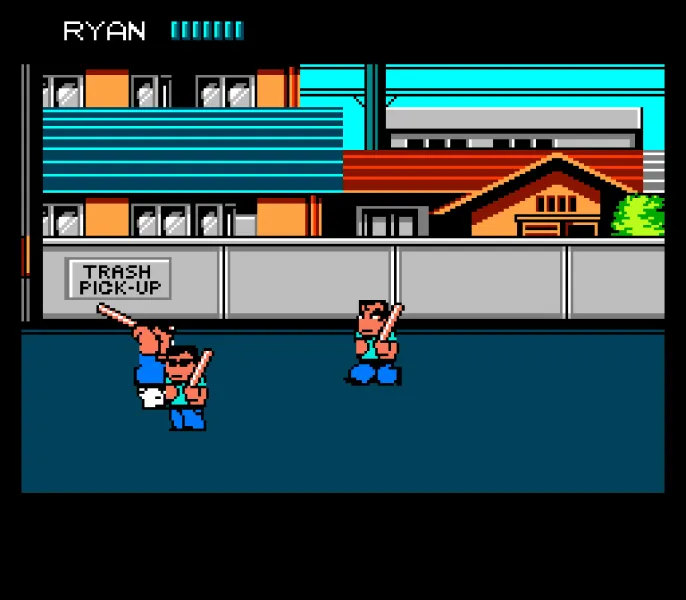 River City Ransom (1989)
River City Ransom (1989)
What are you three favorite games of all time? And you can’t pick a franchise. You can’t say something like Zelda, for example. It has to be a specific Zelda game, if it is, in fact, Zelda.
Zelda isn't one of my big ones. I was actually thinking about the other day because while I was playing through the game, I was just like, “Okay, well, my top games – I've often said it's River City Ransom, Monkey Island 2, Chrono Trigger, and then a new a new addition is Bloodborne, which I got obsessed with during the pandemic and stuff.
And I feel like [Scott Pilgrim EX] has elements of all of those things, which I was just like, “Oh, it does. It kind of has all those things.” It has the structure of River City Ransom. It has the jokey storytelling dialog stuff from Monkey Island, which was something that really unlocked writing and comedy for me when I was a kid.
Chrono Trigger – it has some RPG elements, and it has some time travel elements. And then Bloodborne, which is a modern game that I like, I know it’s over ten years old now, but [Scott Pilgrim EX] has so much variety in the combat. Each character has their own feeling, and I feel like you can replay it as each character and get a totally different experience.
I'm surprised you say Monkey Island 2 specifically.
[Monkey Island 2: LeChuck's Revenge] just happened to be the first one I played. And, yeah, I know it’s kind of held as the black sheep of the franchise. But for me, that is like the pinnacle of comedy and gameplay and… I don't know, just world-building and fun.
Do you like the ending?
I love the ending! Of course. The ending is everything to me. It's the meta thing. I love that stuff.
 Return to Monkey Island (2022)
Return to Monkey Island (2022)
Did you play Return to Monkey Island in 2022?
I have it, and I played like half of it. And then I forgot to finish it. The aesthetic didn't appeal to me as much. The thing about the classic games is that it's got Steve Purcell, it's got all these iconic towering artists working on it, even though it's like 320 pixels or whatever. It still just has this magical visual appeal to me.
The 2010 remake was actually the first time I played Monkey Island 2: LeChuck's Revenge, where you could swap back and forth between the visuals on Xbox 360.
Oh, no, no. The new graphics were toxic to me. My eyeballs melted, so I would immediately switch back to the classic.
For anyone who is a fan of video games in general, Chrono Trigger is usually one that comes up as a favorite.
Yeah, that and Earthbound are kind of now known as the iconic games of the 90s.
The early Scott Pilgrim EX sequence where you go back in time and fight Roxie's ancestor on the dinosaur made me think of Chrono Trigger. I don't know if this was intentional. I’m embarrassed to admit, but I can't remember the party member name… the one who you joins your party from the prehistoric era?
Ayla.
Yeah! Was that an overt reference, or a coincidence?
Yeah. For sure. I think Jonathan [Lavigne, Tribute Games co-founder] loves Chrono Trigger too, because he put in a whole homage to Chrono Trigger in a later level. That's just like a straight rip-off of a Chrono Trigger scene [laughs]. We had a lot of fun with. Obviously, the studio is called Tribute, so the game is knit together from all these little tributes.
Do you think you could ever work on a video game that didn’t have pixel visuals? Would you want to?
I could. It would just have to be something really special.
I ask because of the way you reacted to the updated Monkey Island visuals.
That was just ugly. No hate to those artists, whoever worked on it, but it just felt like they painted over everything with a sloppy digital brush. I didn't take well to the turn to HD in the industry or even the turn to 3D in the mid 90s. I was always kind of a pixel die-hard. I'm not militant, but getting to work with all these pixel artists on the game is always just a joy.
What about 2025 favorite games? Are you playing many contemporary games?
I was just installing Steam on my phone so I could look at my list. But what have I been playing? How do I even use this app? Where's my library? Here we go [laughs]. I have been playing a lot of Scott Pilgrim EX.
Of course.
I've been playing a lot of JRPGs. There’s been a lot of rereleases this year. Final Fantasy Tactics, which was one of my favorite games back in the day – I started playing that, and then I just fell in this hole of playing a whole bunch of other ones.
Triangle strategy? I'm playing that right now on Switch. It's really fun. It's really beautiful. It's HD pixel. It's really beautiful. I just can't explain it, but the combination of the pixel art and the 3D backgrounds and the real-time lighting is just magical.
New big games? I haven't played. Silksong. I haven't played Hades II yet, even though I played 1,000,000 hours of Hades I. I'm a little nervous to get into Hades II. I want to finish [Scott Pilgrim EX] before I do that. What else is new? I've never been one to jump on the new thing right away, so I'm playing a lot of stuff that came out in the past few years or remakes of older stuff. A lot of JRPGs, like I said.
I downloaded a couple new games recently that I haven't even tried yet. I'm just stacking up this list of games to play.
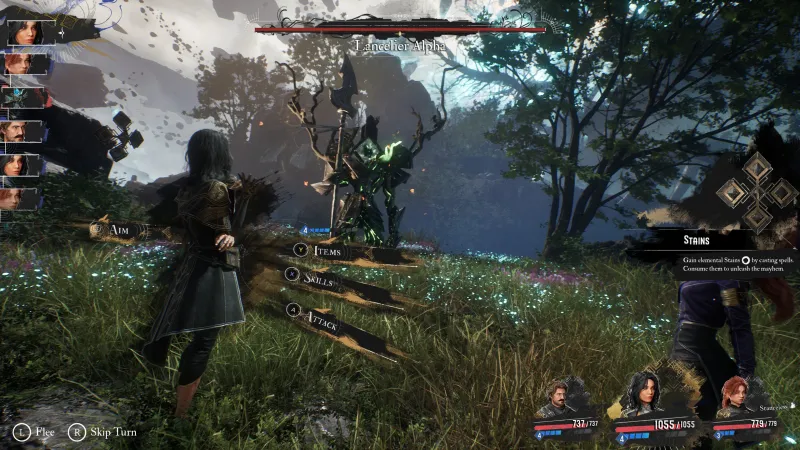 Clair Obscur: Expedition 33 (2025)
Clair Obscur: Expedition 33 (2025)
Have you checked out Clair Obscur: Expedition 33? It’s a game of the year front-runner for many and does feel like JRPG.
I haven't. I watched some streams of it and stuff. I don't know. I hate saying this, but… it feels too French for me. My family's French, you know? There's just something weird about it to me. It's the dissonance of the Frenchness and the JRPG quality of it? So I haven't really tried it yet. But I'm sure I'll play it eventually.
Do you speak French? Did you grow up speaking French in Canada?
I don't speak it fluently. A little bit. But my dad's side of the family is all French-Canadian.
Bloodborne is the other one that you called out. Are you a fan of the soulslike genre?
I play all those games, but I didn't play Bloodborne until about two or three years ago, even though my friends all raved about it. When it first came out, I was just like, “Horror? I don't really care.” During the pandemic, I played the first Dark Souls in 2020 and finally beat it. I bought Dark Souls when it first came out and I was so terrible at it. I didn't really understand the grind of it or the philosophy of it. So once it clicked for me, during the pandemic, those were pretty much the only games I played for a while.
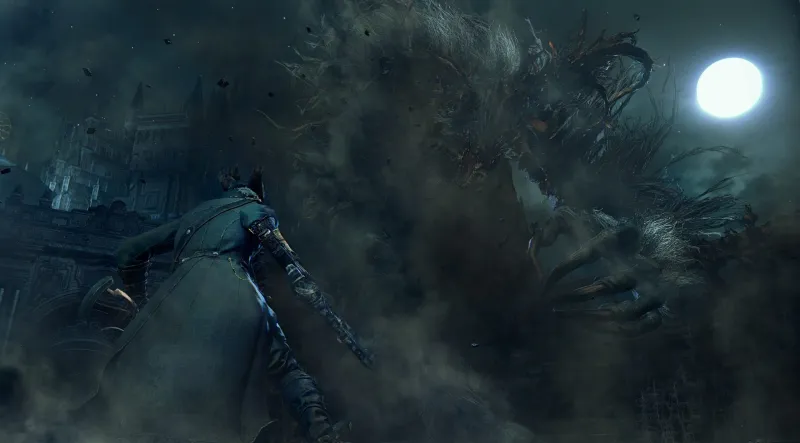 Bloodborne (2015)
Bloodborne (2015)
I generally enjoy From Software games, but Elden Ring is the one that took over my life.
I haven't beaten it. I’ve gotten pretty far. I've done multiple, like, 200-hour playthroughs of it. And then I'll just forget where I was and get confused and I'll start over because I always enjoy the early game in these games. Yeah. They’re so polished and they’re so appealing. I'm feeling the itch to go back to Elden Ring now.
I also played a lot of Nightreign over the summer. That’s probably my top new game this year. I played hundreds of hours of that.
Do you play mostly on PC? Steam Deck or Switch?
PS4 for that. I have just about everything. I don't have a Steam Deck. I have a PS4, I don't have a PS5 [laughs].
That’s surprising.
Again, I don't hop on the new thing and I know PS5 has been out for years now, but when it came out, all my friends were scrambling to get one and I was like, “I don't want to be a part of that rat race.” So, I still haven't gotten one. And I'm sure I could just get it and still keep playing the same games, but I haven't bothered yet.
It would make your games look and play a little better.
Actually, one time I was playing Nightreign, and I was watching my friend on the stream who I was playing with and I was like, “Why does yours look so good?” And I was like, “Oh, wait – that's PS5. Okay, I see.”
Speaking with Tribute Games co-founder Jonathan Lavinge about working on the original Scott Pilgrim game, I got the sense that you weren't as involved with that one as maybe you wanted to be.
Yeah. I wanted to correct you earlier. I barely touched the first game. I was doing the comic, too. So there was the movie, the comic, the game. They were all happening at the same time, so I was very, very busy. I did a few thumbnail sketches for the endings and then it was kind of a whole mess, the way it got completed. My rough sketches for the game got turned into pixel art without an intermediate stage. So I've always though, “Oh, that art doesn't look that good.” So on this one, I've been more hands-on with that particular aspect. Just trying to make the art a little more… at least my art, more finished before turning it in.
 Scott Pilgrim vs. The World: The Game (2010)
Scott Pilgrim vs. The World: The Game (2010)
Seeing you talk about the game on social media and various platforms, I get the sense that you are overall happy with it, though.
Oh yeah. I think we all think it turned out really well. But it was a difficult period for everyone.
Has Scott Pilgrim EX been an opportunity to input on a Scott Pilgrim as you wish you could have for the first game?
When I visited [Tribute] the last time, it really felt like they had unfinished business with Scott Pilgrim. It is still a sore spot. For that game, they cut the budget. And they didn't let us finish everything we wanted to do. They still had something to say and this new game is very different. It's not the game that they would have set out to make back then because they've just they've matured and developed a lot but I am really feeling the game. I played through it yesterday and I was just like, “It's really coming together.”
The Anamanuchi soundtrack for the first game is an all-timer for me. I was very excited to learn they are doing the soundtrack for EX.
I think you probably heard the latest versions. But the boss theme for the dinosaur boss is off the chain. I feel like they're doing their best work. I think we're going to start the campaign for game soundtrack of the year next year for The Game Awards.
They've got to be a shoo-in because it's towering. It's really, really great work.
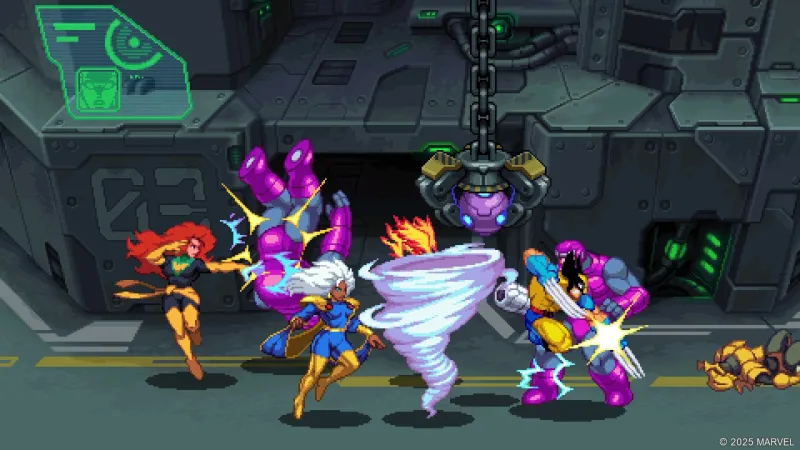 Marvel Cosmic Invasion (2025)
Marvel Cosmic Invasion (2025)
Hearing the new soundtrack was the element I was most excited about when I started making plans to visit the studio and write a feature about the game for the magazine, but I was also excited to see how Tribute worked. It has had a really good run between Teenage Mutant Ninja Turtles: Shredder’s Revenge and Marvel Cosmic Invasion.
I was there about a year ago when I was first starting. They were already well into production, but when we were planning everything we had to do left and they showed me the first few levels of Marvel [Cosmic Invasion]. The first few characters, it was like, “Oh, wow, you guys are doing this at the same time?” It's so different but it's so accomplished. It's so beautiful and so skillfully done.
Would you ever want to, with Tribute or anyone else, make an original game in the future?
I mean, maybe. We'll see how they feel about me after this game is done [laughs]. I feel like I'm so annoying. I feel like a dilettante because it's not really my world.
Scott Pilgrim is not really your world?
Scott Pilgrim is literally my world, but, making the game? I don't want to be annoying. Maybe I'm just Canadian, but so are they. We talked at one point about an original concept when Scott Pilgrim was off-limits for us. But it's just… It's a lot.
Maybe I'm not the best suited for that. Maybe I'll make more comics, and then eventually, someday, we'll make another adaptation or something. But I don't know if I would develop something from the ground up, especially after the last five years of developing the show and then this game. Even when you're developing it not from scratch, it's still a ton of work.
And, I should really get back to comics at some point.
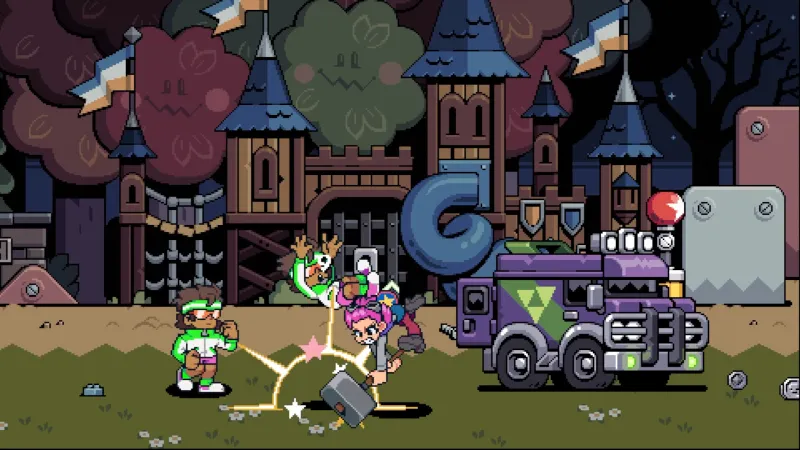 Scott Pilgrim EX (2026)
Scott Pilgrim EX (2026)
Tribute told me that something you are focused on related to the game’s writing is condensing everything to make sure you only have one block of text on screen at a time. That must be the comic book writer skill coming through?
Yeah, that must be. I mean, it really bothers me if a text spills over by one word. It's painful. Every time, knife in my heart. So, yeah, I tried really hard to condense the text. It's a huge part of what I do in comics. I am working on this Scott Pilgrim comic right now, and I changed the wording of something so it would fit in the balloon perfectly, and it just made me so happy. It just gives me whatever, asmr or something.
And in a game, I don't want too much text. I know some people love these games where you just go through millions of lines of text. Even something like Hades. It has so much text. But I know a percentage of the audience – I don't know what percentage – but some of them are just going to click through madly and not care whatsoever. So I want everything to work, even without any of the dialog.
And the dialog is just for fun, for flavor, for the fans, and, hopefully it'll work both ways.
